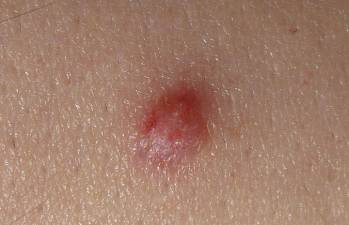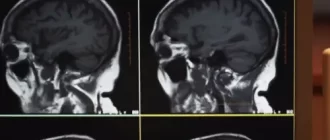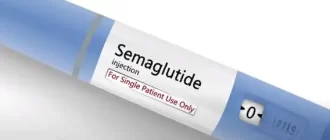Red moles (red dots, angiomas) are vascular neoplasms that range in diameter from a few millimeters to several centimeters. Most often, angiomas appear during intrauterine development (congenital angiomas), but they can also occur after birth.
Small red moles can be located on the abdomen, arms, legs, back, chest, face, neck, and internal organs. Depending on the shape, there are three types of red moles: pitting, cavernous and stellate.
Why do red dots appear on the body?
Red dots (moles) are formed by a large number of microscopic blood (hemangiomas) and lymphatic (lymphangiomas) vessels. The main cause of red moles is dysfunction of the circulatory and lymphatic systems.
Angiomas on the body are most often caused by:
- Hormonal changes in women (during pregnancy, taking oral contraceptives);
- skin traumas;
- genetic features of the body;
- Diseases of the gastrointestinal tract, liver and pancreas;
- long exposure to sunlight and frequent visits to a tanning bed.
Causes
If the body appears red moles, it may be a simple cosmetic defect, but it can also speak of the occurring in the body of pathological processes. In some cases, the appearance of angiomas signals poor diet, prolonged exposure to the sun and the slagging of the body.
Red dots as moles may indicate an increase in oestrogen levels in the body, liver disorders and an increase in insulin in the blood. In addition, in some cases, angiomas appear as the body’s response to a lack of iodine, magnesium, chromium, vitamins C and K.
Hemangiomas and microhematomas
Small red dots on the body can occur after damage to the skin. For example, such superficial capillary injuries often occur during waxing. If the skin is heavily impacted, the surface of small blood vessels close to the surface is traumatized. And on the outside there is a small bruise due to the fact that the blood comes out in the subcutaneous fat layer. Such points are also called microhematomas. If you did epilation with a novice master, there may be quite a few.
Small bruises may appear in other places. Externally, these red dots on the body look like moles. If you see a cluster of dots, or if they appear periodically without reference to any procedures, it may be associated with increased vascular fragility. It usually occurs due to a lack of vitamin C and K in the body. If any trauma, strong friction of the skin against the tissue causes such “redness”, then this is most likely the cause. You will need to undergo the necessary tests and take the recommended doctor’s course of vitamins.
As for hemangiomas, they are vascular tumors, benign. Their features are as follows:
- They can be up to several centimeters in diameter.
- If we are talking about dilated capillaries, provoking the disease, then hemangioma is called capillary.
- But cavernous hemangiomas can often occur on the face and torso. These are large cavities filled with blood, they look like swellings and can cause significant discomfort and change the appearance.
- Hemangiomas can appear at any age, even in infants.
You cannot expect the tumor to go away on its own. It is definitely necessary to see a doctor, and he will help you choose a treatment.
Red dots with vascular branches and in the form of small rashes
There are other reasons for the appearance of such skin changes:
- Red dots on the body can represent vascular stars and occupy quite a large area. In this case, too, you can not delay a visit to the doctor. The fact is that such redness in the form of capillary branches can indicate the development of dangerous diseases – cirrhosis of the liver and viral hepatitis.
- If we are talking about red dots that resemble small rashes on the chest and back, then it is likely that the person has problems with the pancreas. Interestingly, they do not disappear when you apply pressure. Also, their number can increase or decrease.
- Often such rashes can be a consequence of autoimmune diseases, such as rheumatism. Then they do not resemble bruises, but rather skin allergies. By the way, allergies can also lead to the appearance of red spots on the body, and in this case they will have a different localization. It is easiest to distinguish an allergic disease by the presence of itching, but also to consult a doctor does not hurt here.
We think that we have answered your question “Red spots on the body – what is it? If doubts about your own health still remain, you can always come to us for a consultation. Also, do not forget that a person needs to maintain health with a proper diet and vitamins. For example, a lot of vitamin C is found in cauliflower and green peas, parsley, tomatoes, and apples. And chicken eggs, spinach, and broccoli are rich in vitamin K. When combined, both of these vitamins “work” to strengthen blood vessels and boost immunity.
What to do if red moles appear on the body?
If red dots appear on the body in large numbers, single angiomas increase in size, or if a red mole has been traumatized, you should consult a dermatologist. Diagnosis of angiomas that are on the surface of the skin is usually by visual inspection and palpation.
If red moles are suspected in the internal organs, additional tests will be needed to detect them. Skeletal angiomas are identified by X-rays of the spine, ribs, pelvis, bones, and skull. Angiography (contrast x-ray examination of blood vessels) can detect red moles in the lungs, kidneys, brain, and other internal organs. The structure of an angioma and the peculiarities of its location are determined by ultrasound examination.
After diagnosis, a dermatologist will determine whether a red mole needs to be treated. Thus, an absolute indication for the removal of red moles is their rapid growth.
In addition, indications for the treatment of angiomas are:
- localization in the area of the neck and head;
- Disruption of the functioning of the internal organ in which the angioma is located;
- extensive tissue damage around the red mole.
Treatment of red moles involves their removal, which can be carried out in a variety of ways. Treatment methods for angiomas include:
- laser therapy;
- radiowave method;
- Cryotherapy (removal of angiomas with liquid nitrogen);
- diathermic electrocoagulation (cauterization with an electric current);
- hormonal therapy;
- Ligation of the arteries that feed the angioma;
- surgical treatment.
Only a dermatologist can prescribe effective therapy for red dots on skin. Treatment of angiomas with folk remedies is not recommended.
Are red dots on the skin of the body dangerous?
Unlike melanoma (a malignant tumor), angiomas are benign. Isolated red moles on the body that do not increase in size and do not cause discomfort do not require treatment and are not dangerous.
But in some cases, red moles can lead to complications. Internal angiomas, depending on their location, can provoke shortness of breath, difficulty breathing, epilepsy, visual and hearing impairment. In addition, angiomas can lead to complications if:
- The red mole is growing;
- there is a possibility of traumatization;
- Many red moles have appeared on the body;
- There is a risk of converting the mole into a malignant growth.
Prevention of red moles (dots)
It is impossible to prevent the appearance of congenital angiomas. A congenital red mole in a child is most often a short-lived formation, and it disappears by the age of 5-7 years. Therefore, if the child does not complain of pain or itching in the area of the angioma, there is no need to worry.
In order to avoid the occurrence of angiomas after birth, it is necessary to follow the following recommendations
- Avoid prolonged exposure to direct sunlight and frequent visits to the solarium;
- Follow a sleeping and eating plan;
- Maintain a healthy lifestyle.
If you have a red dot on your skin, it is important to monitor its development and consult a dermatologist at the first sign of injury or size change. If you go to the doctor in time, it is possible to prevent complications of angiomas and, if necessary, begin therapy in time.








